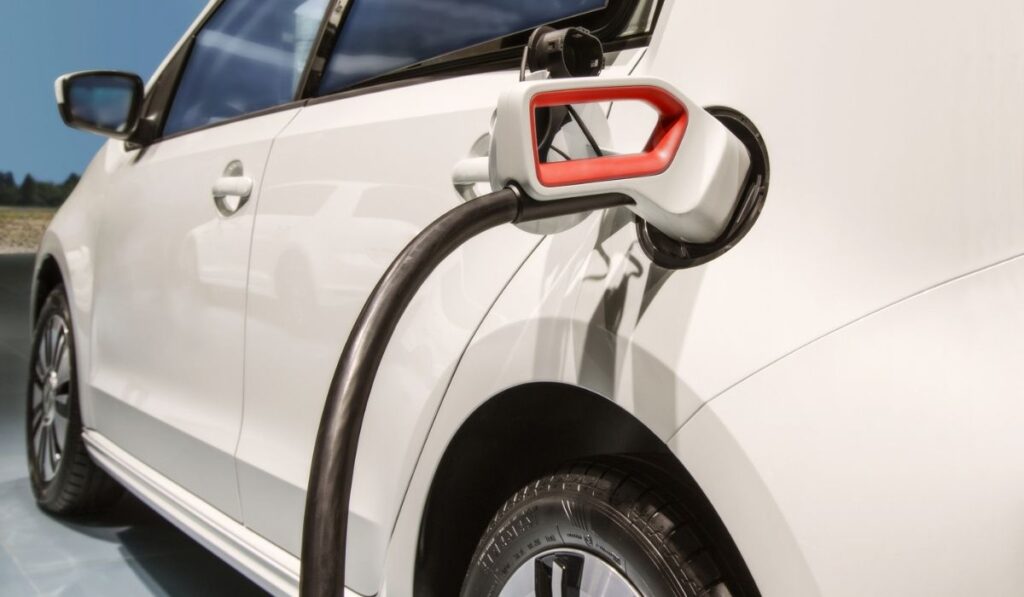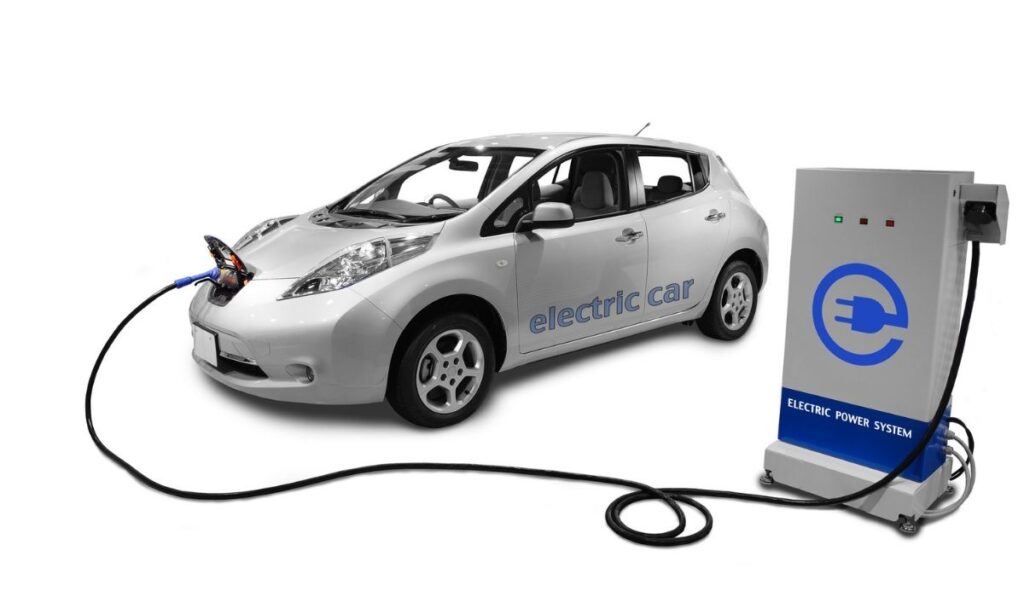Electric cars (EVs) are steadily gaining in popularity and becoming more affordable for the average consumer. But these vehicles are different from your traditional car that features an automatic or stick shift. Is it even possible for an electric vehicle to have a manual transmission?
It’s possible for an electric vehicle to be a stick shift. However, it’s uncommon, and there are only prototypes or DIY conversions so far. The main factor behind a manual transmission is the voltage. Higher voltages don’t typically require a transmission, making them unnecessary in most EVs.
Don’t panic if you’re a gear shifting enthusiast. Although manual transmissions are losing popularity, they’re likely to stick around in the market for some time. In the meantime, with the increase in EVs, will we ever see one with a clutch? Here’s what you need to know.
How Do Electric Cars Work?

The basics of electric vehicles can be challenging to understand for newcomers. With various types of electric cars and different components, where do you even start? First, some EVs use only electricity. Other options use a combination of electricity and petrol. Let’s dive in a bit further to the main groups of electric vehicles and their key components.
All-Electric Vehicles
What images come into your head when you picture an electric car? The answer is probably closest to all-electric vehicles. All-electric vehicles rely solely on an electric motor. These types of vehicles don’t contain any sort of internal combustion engine. All-electric cars contain large traction battery packs that supply the motor with power.
It’s necessary to plug these EVs into a wall outlet or charger, commonly known as electric vehicle supply equipment. The benefit of all-electric vehicles is that they don’t emit exhaust fumes. They also don’t require standard liquid fuel components such as fuel lines, fuel tanks, or fuel pumps.
Plug-In Hybrid Electric Vehicles
Another common model is plug-in hybrid electric vehicles, otherwise known as PHEVs. The difference between EVs and PHEVs is that these models contain electric motors as well as an internal combustion engine (ICE). These vehicles use batteries to supply their electric motors with power.
PHEVs can also be plugged in and charged using outlets or charging equipment. They make use of regenerative brakes, as well. Plug-in hybrid cars also use petrol to run the standard engine. These vehicles switch from electric power to the internal combustion engines when the electric batteries are near dead.
Hybrid Electric Vehicles
The last category is hybrid electric vehicles or HEVs. These models utilize both an internal combustion engine and an electric motor. The main difference is that HEVs can’t be plugged into an outlet or any charging equipment.
Instead, the batteries are charged via regenerative braking and the standard engine. HEVs have the benefit of extra power from the electric motor. This allows for a smaller engine. The battery, electric motor, and internal combustion engine work in tandem for better gas efficiency and performance.
What Is Manual Transmission?
There are two types of transmissions in traditional cars: manual and automatic. Manual transmissions are sometimes called standard or stick shifts. Manual transmissions require the driver to manually change the gears as they accelerate and decelerate. The shift is located on the center console, and the shift lever is attached to the transmission.
Manual transmissions also require the use of an additional pedal known as the clutch. The clutch is located to the left of the brake pedal. Pressing the clutch pedal disengages the clutch mechanism.
The clutch mechanism is located between the engine and the transmission. When the clutch is pressed down, power stops going from the engine to the transmission, allowing the driver to swap gears.
Drivers press down the clutch pedal, move the shifter to their desired gear, and then release the clutch pedal to re-engage power from the engine. Stick shifts require some practice to get used to.
If you engage the clutch pedal too fast, the engine will stall out. On the flip side, engaging the clutch pedal too slowly can cause unnecessary damage to the internal components.
Are Electric Cars Manual or Automatic?
Generally speaking, most electric vehicles are automatic. When you step into an electric car for the first time, you’ll notice a few differences compared to a traditional vehicle. First off, electric cars don’t usually have the typical gear styles with a leaver or selector.
Electric vehicles also don’t normally have a clutch, which means there’s no possibility of stalling out. Electric vehicles are similar to automatic cars but with a few distinct differences. Most electric cars don’t shift through gears as they accelerate or lose speed. Instead, it’s a smooth and gradual process.
Electric cars usually only contain one driving gear and one for reverse. Therefore, they don’t require a manual gearbox. The motors in an electric car have 100% torque, regardless of the power. This means the faster the motor spins, the faster the wheels are spinning.
On the other hand, a standard combustion engine reaches peak torque levels at a specific point in the rev range and requires changing gears to compensate. Electric cars can reach higher revs than traditional engines.
EVs get around 20,000 revs per minute, while conventional engines reach about 4,000 to 6,000 revs per minute. This difference allows electric cars to change speeds without the need to adjust the gears, allowing for faster acceleration in the process.
However, there isn’t a distinct reason why an electric car can’t have a manual transmission. In fact, the automobile industry is starting to release some electric vehicles containing stick shifts.
Can Electric Cars Have a Manual Transmission?

It is possible for electric cars and vehicles to contain a manual transmission. In fact, some manufacturers have showcased different models that contain manual transmissions along with a clutch.
However, these might only be niche scenarios, and the future might not contain as many manual electric cars as you might think. So, what’s the verdict?
Manual Prototypes
Ford unveiled a manual transmission EV prototype at the 2019 Specialty Equipment Manufacturer Association show. The vehicle was called the Ford Mustang Lithium. The car featured 1,000 horsepower and a six-speed manual transmission. It had a clutch, gearbox, and gear lever.
Besides the Ford Mustang Lithium, there have also been rumors of manual four-wheelers and electric jet skis. Kawasaki also teased an all-electric, 4-speed, manual transmission motorcycle known as the Endeavor.
There are also companies that convert manual vehicles to electric and sell conversion kits for DIY enthusiasts. However, there are a few caveats to what makes a manual transmission EV possible.
The Voltage Matters
The voltage range is one of the main components affecting whether a transmission is necessary. Higher voltages allow for a wider RPM band and torque. Higher voltage vehicles, like Tesla’s 400-volt system, don’t require a transmission.
This is because the motor produces large amounts of torque above the 12,000 rpm range. Lower voltage motors produce less torque, enabling smaller transmissions to increase the torque.
So whether an EV gets a manual transmission might depend on the voltage system. Higher voltage vehicles don’t necessarily need a transmission, gearbox, or clutch. Most consumers want instant power with high levels of torque, making manual EVs less enticing.
Manual Transmission Are Losing Popularity
It’s important to note that manual transmissions are losing popularity among the average American consumer. According to recent data, only 13% of new car models had the option of a stick shift in 2020. There has been a steady decline in vehicles with manual transmissions, and it doesn’t seem to be stopping anytime soon.
With electric vehicles and automatic transmission gaining popularity, we might see stick shifts nearly disappear from the market. New generations of drivers prefer automatic cars, with EVs being the natural progression.
Manual Transmissions Might Become a Niche
As automatic cars rise, stick shifts may become a niche in the industry. With new generations preferring automatic cars and the growing emphasis on electric vehicles, it’s unlikely to see mass-produced manual EVs.
That being said, there’s still space for the manual transmission market. Manual transmission might become a more expensive option for enthusiasts who prefer shifting gears. Only time will tell.
